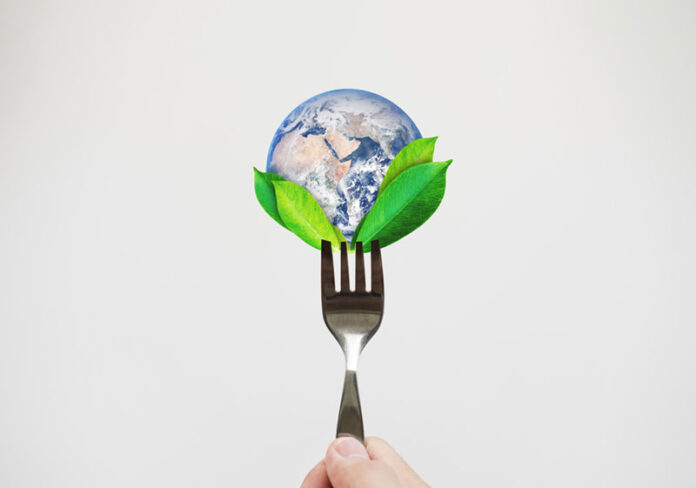When it comes to what we put in our mouths, we already make a lot of considerations. We choose foods based on price, how they taste, and how they align with any nutritional requirements or dietary restrictions. We need food to keep us alive, but for our planet to survive, we need to eat certain foods over others. Let’s take a look at how we can create a planet-friendly plate with the 50 most sustainable foods.
The Environmental Impact of What We Eat
There are two things to keep in mind when thinking of the most sustainable foods:
- Our food system is responsible for about 21-37% of total greenhouse gas emissions (GHG)
- Earth’s finite resources must continue to nourish humans—especially as the population reaches nearly 10 billion by 2050.
Our late-night cravings and meal preps impact our planet in several ways. Livestock and farming activities account for the highest amount of emissions (9-14%), land-use changes (like clearing land for farming) produce nearly as much (5-14%), and then transportation and other supply chain activities produce roughly 5-10% of the total GHG.
Global food waste is also responsible for roughly 8% total global GHG, meaning that it could be considered the third highest emitter if it were a country (just after China and the USA).
Fortunately, there’s a lot that can be done to satisfy a grumbling belly and keep our environmental impact down. It all starts with stocking our kitchen with some of the most sustainable foods, doing our best to minimize food waste, then composting any leftover scraps.
Top 50 Most Sustainable Foods
The secret to eating sustainably is to consume a diverse diet and to reduce dairy and meat consumption. Why?
- When we practice “dietary monotony,” where we typically eat the same types of foods, we’re contributing to our food system’s dwindling biodiversity loss—86% of food species are currently at the risk of extinction.
- Animal-based protein sources (meat, dairy, and egg production) are responsible for more greenhouse gas emissions, water consumption, and land use than plant production.
The World Wildlife Fund’s Future 50 Foods was one of the first major reports to recommend that types of foods can and should be eaten sustainably.
All of the following foods are chosen because they inspire greater variety in what can be eaten, demonstrate that plant-based foods can replace animal protein, and show that nutrient-rich sources of carbohydrates not only support us, but also thriving agrobiodiversity levels.
1. Laver seaweed (‘nori’)
It turns out your sushi habit is (at least somewhat) sustainable. This red algae is loved in Japanese culture, is rich in vitamin C and iodine, and can grow year-round without inputs.
2. Wakame seaweed
One of few plant-based sources of omega 3 fatty acids, this algae can be grown around the world and is commonly sold dried.
3. Adzuki beans
The small, brownish-red beans come from a drought-tolerant plant and can grow in a range of conditions. They’re full of antioxidants, protein, potassium, fiber, and B vitamins.
4. Black turtle beans
Considered a “superfood” because of their protein and fiber content, the black beans taste like mushrooms and have a meaty texture. They make for a great substitute for ground beef.
5. Broad beans (fava beans)
These adaptable plants can grow nearly everywhere and attract beneficial pollinators. The beans are sweet and buttery, and are a great source of fiber.
6. Bambara groundnuts
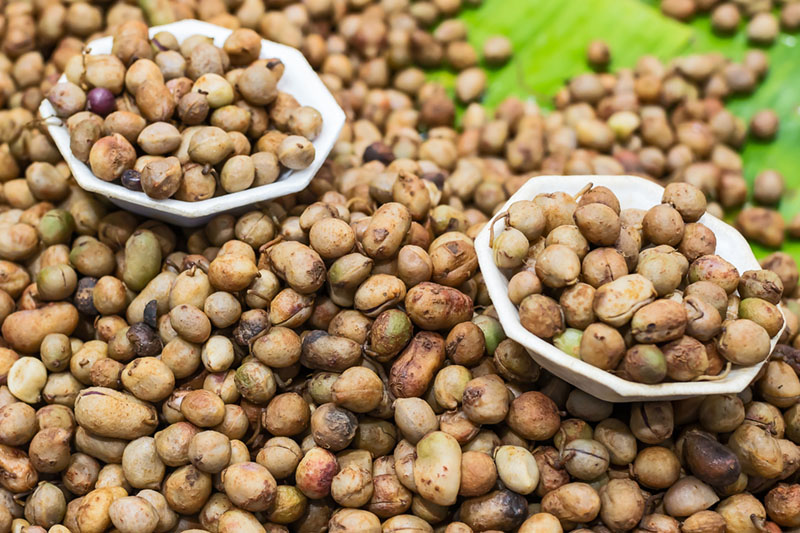

These are an important legume in Africa, because they can grow in challenging environments and provide a lot of nutrition—fiber, protein, vitamins, and minerals. In fact, it’s considered a complete protein because of its amino acid profile.
7. Cowpeas
These nutty beans have high nutritional value and are also a quick-growing, drought- and heat-tolerant crop.
8. Lentils
Lentils have a carbon footprint that’s a whopping 43 times lower than beef! They’re an excellent source of protein, fiber, and carbohydrates and make for a tasty veggie burger.
9. Marama beans
This ancient food can tolerate damaged soil and harsh environments. They can be roasted, boiled, or turned into flour.
10. Mung beans
High in protein, minerals, and B vitamins, mung beans are also versatile. They can be scrambled like eggs, pureed, or transformed to sprouts.
11. Soy beans
Consumed for more than 9,000 years, soy beans have been valued for their nutritional content and ability to be transformed into many other sustainable foods, like tempeh, tofu, and soy milk.
12. Nopales (prickly pear cactus)
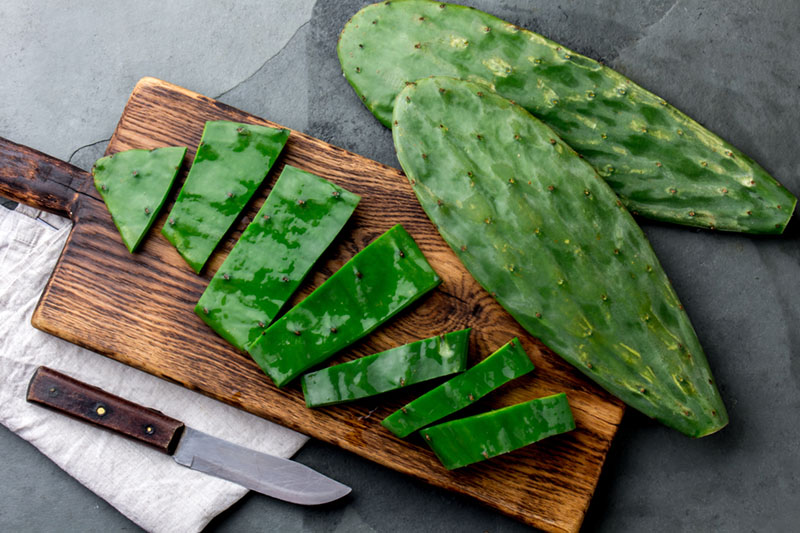

Commonly used in Mexican cuisine, this cactus is easy to grow and an excellent source of nutrients. Some studies even suggest that it might be a handy food to have around when suffering from a hangover!
13. Amaranth
The amaranth plant doesn’t require a lot of water. The nutty grain can be eaten in a variety of ways—even its leaves can be consumed like leafy vegetables.
14. Buckwheat
In just 8-12 weeks, buckwheat can grow—thriving in even depleted soils. The grain is actually not a relative of wheat, and can be consumed for those following a gluten-free diet.
15. Finger millet
This member of the grass family can thrive in low-quality soil and is resistant to pests. It’s also highly nutritious, and the nutty flavor comes packed with vitamin B1, minerals, and fiber.
16. Fonio
This grain was valued in ancient Africa as it’s easy to prepare, and just as easy to grow. It’s gluten-free, very nutritious, and can be used in a range of foods and drinks—from hot cereal to beer.
17. Khorasan wheat
Commonly referred to as its trademarked name (KAMUT), this ancient wheat tastes nuttier, creamer, and richer to its relative. It is grown in many countries around the world and a common ingredient in salads, soups, pilafs, and stews.
18. Quinoa
There are more than 3,000 varieties of quinoa, which is not a cereal grain, but actually a relative of leafy greens like spinach and swiss chard. It can grow in many areas around the world and is a complete protein.
19. Spelt
Compared to other types of wheat, spelt is a superior source of fiber and minerals. It commonly makes its way into bread, as well as dishes like pilaf and risotto.
20. Teff
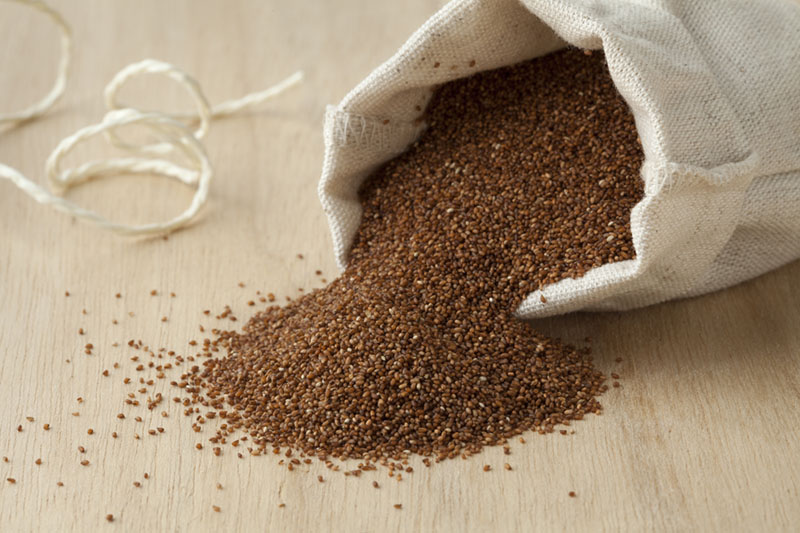

Growing in popularity, teff is an excellent source of nutrition, grows well in both drought and flood, and tolerates pests.
21. Wild rice
Growing in North American lakes and rivers, this ‘rice’ is actually a semi-aquatic grass, and in fact is much more nutritious than white rice.
22. Pumpkin flowers
The flower of the pumpkin plant is highly nutritious and delicious—but unfortunately are often discarded. Instead, they could be incorporated into foods like salad, pasta, and soup.
23. Okra
Okra is considered to be one of the most heat- and drought-tolerant vegetables in the world. It’s also high in antioxidants.
24. Orange tomatoes
Orange tomatoes have more sweetness and less acid than red tomatoes—and also contain as much as two times as much vitamins and minerals. Heirloom varieties are even better as they’re more resistant to pests and disease.
25. Beet greens
The leaves of beets are the most nutritious part of the plant, rich in vitamins like A and K! They can be eaten raw, sautéed, or even baked into crisps.
26. Broccoli rabe
Broccoli rabe is easy to grow, and a great source of vitamins and minerals. Every part of the plant can be consumed, and it can be boiled or sautéed with garlic and chili.
27. Kale
Kale yeah! This brassica can stand cold temperatures and is an excellent source of manganese, copper, and vitamins A, K, and C.
28. Moringa
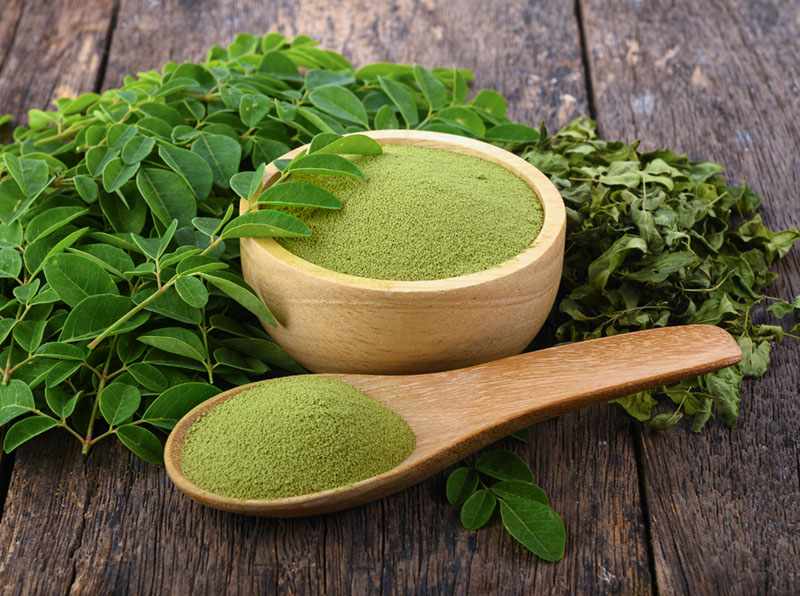

Commonly sold in powdered form, moringa can be used in teas, sauces, smoothies, and soups. It’s an excellent source of many nutrients and grows quickly in harsh conditions.
29. Chinese cabbage (pak-choi or bok-choy)
This popular Asian vegetable has started to make its way around the world. It’s highly nutritious and relatively easy to grow.
30. Pumpkin leaves
The fruit, flowers, and leaves of the pumpkin plant should all be eaten! As an excellent source of carotenoids, iron, and vitamin K—and a flavor like spinach and asparagus—there’s no reason to waste this valuable food source!
31. Red cabbage
Compared to its green relative, red cabbage is hardier and more colorful than green cabbage—and has significantly more iron and vitamin A.
32. Spinach
The tender vegetable is packed with nutrients and can be grown year-round in many places of the world.
33. Watercress
Considered a ‘superfood,’ watercress is high in antioxidants and other nutrients. It can be sautéed, eaten fresh, or mixed into tarts, omelets, soups, or salads.
34. Enoki mushrooms
Commonly found in East Asian cuisines, enoki mushrooms are known for cancer prevention and taste great when briefly pan roasted.
35. Maitake mushrooms
These mushrooms are high in B vitamins and one of the best non-animal sources of vitamin D.
36. Saffron milk cap mushrooms
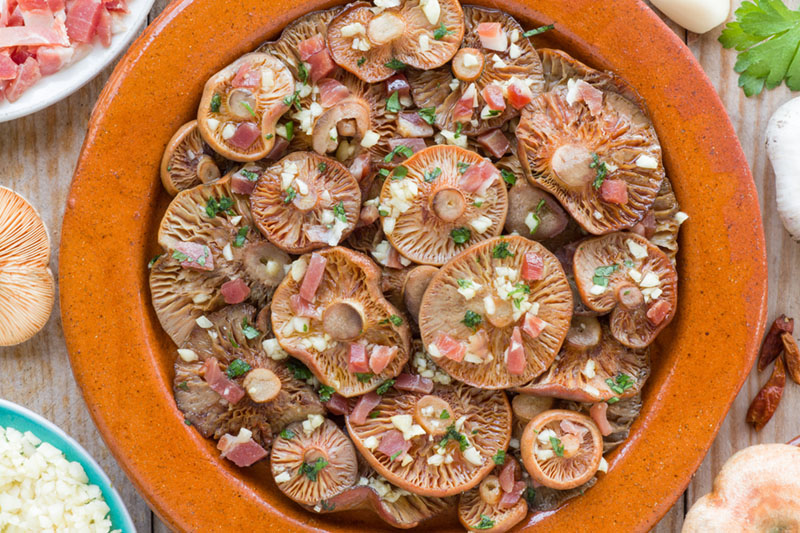

In Russia, these are valued for their ability to treat a wide range of health conditions. They also grow in pine forests in North America and taste great in a pasta dish.
37. Flax seeds
This functional food is high in omega 3 fatty acids and is commonly incorporated into plant-based dishes like veggie burgers.
38. Hemp seeds
These seeds are small, crunchy, and have a creamy, buttery flavor. They’re high in both omega 3 and 6 fatty acids, as well as protein and iron. They can be eaten raw, turned into oil, or sprouted.
39. Sesame seeds
Sesame seeds can be eaten raw or toasted, or turned into a creamy paste called tahini. They’re an excellent source of magnesium and copper.
40. Walnuts
Walnuts are higher in vitamin E and omega 3 fatty acids than other nuts, and considered to be ‘brain food’ because of their brain-like shape and nutrition profile.
41. Black salsify
Similar to a parsnip, this vegetable is actually a member of the sunflower family. It grows in cool, temperate regions and can be baked, boiled, mashed, and served like a potato.
42. Parsley root
The taproot vegetable can be eaten raw, fried, or baked. It’s high in vitamin C and resistant to drought.
43. White icicle radish (winter radish)
With a look similar to carrot, this type of radish has a milder taste than its relatives, and is a good source of vitamin C. It can grow from seed to maturity in under a month, too!
44. Alfalfa sprouts
These can be grown at home, all you need is moist, warm conditions! In just a few days, the seeds germinate, providing sprouts that are nutrient dense and add crunch to any meal.
45. Sprouted kidney beans
Kidney beans are valued as a good source of protein and their sprouts have up to three times as much nutritional value as unsprouted beans!
46. Sprouted chickpeas
Chickpeas, or garbanzo beans, are easy to sprout. They just need to be soaked for eight hours, drained, rinsed, and transferred to a glass jar with a cheesecloth cover.
47. Lotus root
The beautiful lotus flower has super-resilient roots that are high in nutrition and have suspected nutritional properties.
48. Ube (purple yam)
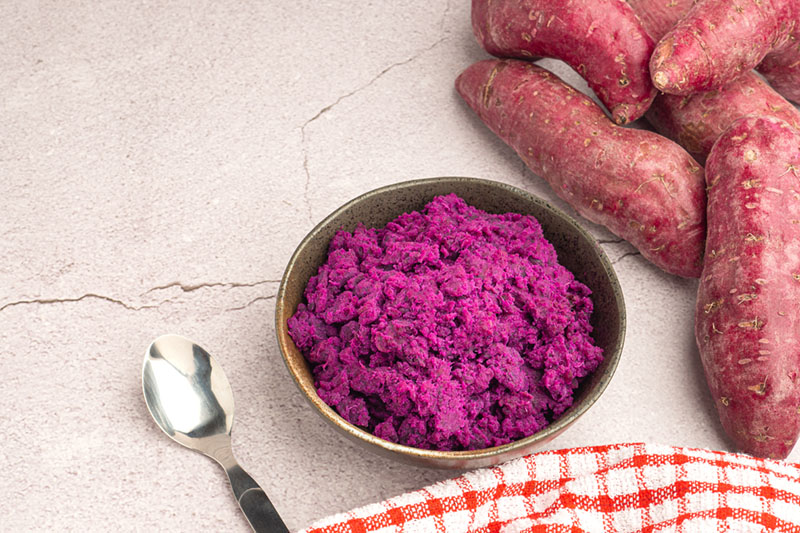

This easy-to-grow perennial vine is known as a ‘famine crop’ because it is nutritious and thrives in a range of conditions. It’s also rich in fiber and many vitamins.
49. Jicama (yam bean root)
Compared to potatoes, jicama can produce as much as three times as much food—even in depleted conditions. The starchy, juicy vegetable is an excellent source of vitamin C.
50. Red Indonesian sweet potatoes
This is one of the most sought after types of sweet potatoes, particularly for its flavor and nutritional value, as it’s high in vitamins A, C, E, and manganese.
___________
We hope you enjoyed this comprehensive list of the most sustainable foods. Let us know what your favorites are, and feel free to share any favorite recipes you have in the comments!

